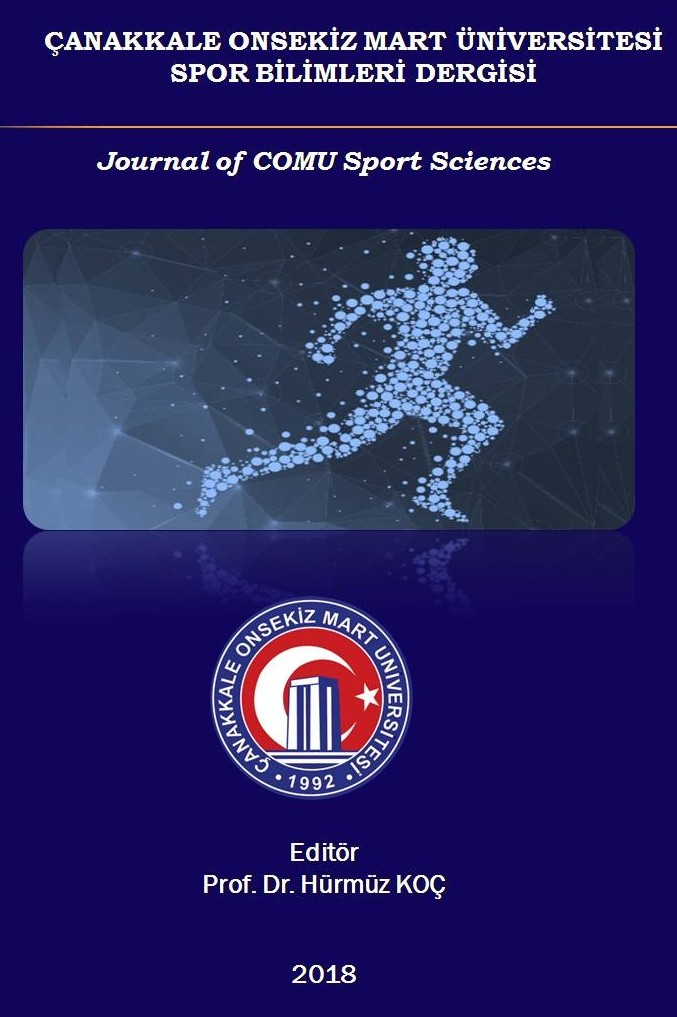Serbest Zamanda Sıkılma Algısı ile Sapkın Boş Zaman Eğilimleri Arasındaki İlişkinin İncelenmesi
Boş zaman, Sapkın boş zaman, Sıkılma
Investigation of the Relationship Between Perception of Boredom in Leisure and Deviant Leisure Tendencies
Leisure, Deviant Leisure, Boredom,
___
- Abraham, I. (2020). Religion after work: Christianity, morality, and serious leisure. In Spirituality, Organization and Neoliberalism (pp. 149-170): Edward Elgar Publishing.
- Bedir, F., Önal, L., ve Stebbins, R. A. (2023). Adult Deviant Leisure Tendency Scale (ADLTS) scale development study, World Leisure Journal, https://doi.org/10.1080/16078055.2023.2213686
- Delamere, F. M., ve Shaw, S. M. (2006). Playing with violence: Gamers’ social construction of violent video game play as tolerable deviance. Leisure/Loisir, 30(1), 7-25.
- Drozda, C. (2006). Juveniles performing auto theft: An exploratory study into a deviant leisure lifestyle. Leisure/Loisir, 30(1), 111-132.
- Gove, W. R. (1985). The effect of age and gender on deviant behavior: A biopsychosocial perspective. Gender and the life course, 115-144.
- Iso-Ahola, S. E., ve Weissinger, E. (1987). Leisure and boredom. Journal of social and clinical psychology, 5(3), 356-364.
- Kaplan, M. (1975). Leisure: Theory and policy. Wiley.
- Kara, F. M., Gürbüz, B., ve Sarol, H. (2018). Yetişkinlerde serbest zamanda sıkılma algısı, algılanan sosyal yetkinlik ve benlik saygısı düzeyinin incelenmesi. Uluslararası Spor, Egzersiz ve Antrenman Bilimi Dergisi, 4(4), 113-121.
- Kara, F. M., ve Ayverdi, B. (2018). Üniversite Öğrencilerinde Serbest Zamanda Sıkılma Algısı Alkol Kullanma Nedenlerinin Belirleyicisi midir?. Gazi Beden Eğitimi ve Spor Bilimleri Dergisi, 23(1), 35-42.
- Karasar, N. (2012). Bilimsel araştırma yöntemi. Ankara: Nobel Yayınları. Keskin, C. (2014). I. dünya savaşı ve sonrası Türkiye’de kültür sanat ortamı ve Türk resmi. Gazi Akademik Bakış, 7(14).
- Kunkel, C., ve Nielsen, J. M. (1998). Gender, residual deviance, and social control. Deviant Behavior, 19(4), 339-360.
- Mansfield, L., Daykin, N., ve Kay, T. (2020). Leisure and Wellbeing. Leisure Studies, 39(1), 1-10. https://doi.org/10.1080/02614367.2020.1713195
- Phipps, C. (2022). Leisure Studies Association Annual Conference 2021. Leisure identities, health and wellbeing: conference review. International Journal of Spa and Wellness, 5(1), 91-94.https://doi.org/10.1080/24721735.2021.1991649
- Raymen, T., ve Smith, O. (2019). The deviant leisure perspective: A theoretical introduction. In O. Smith, ve T. Raymen (Eds.), Deviant leisure: Criminological perspectives on leisure and harm, pp. 17-44. Palgrave Macmillan.
- Rojek, C. (1999). Leisure and culture. Springer.
- Rojek, C. (2000). Leisure and the rich today: Veblen's thesis after a century. Leisure studies, 19(1), 1-15.
- Sarwar, M., Alam, M., ve Anwar, M. N. (2010). Location and gender differences in deviant behavior among primary school teachers. International Journal of Business and Management, 5(12), 97.
- Stebbins, R. A. (1996). Tolerable differences: Living with deviance: McGraw-Hill Ryerson.
- Stebbins, R., Rojek, C., ve Sullivan, A. (2006). Special issue: Deviant leisure. Leisure/Loisir, 30(1), 3-305.
- Stone, P. R., ve Sharpley, R. (2013). Deviance, dark tourism and ‘dark leisure’: Towards a (re) configuration of morality and the taboo in secular society. In S. Elkington ve S. Gammon (Eds.), Contemporary Perspectives in Leisure, pp. 76-86. Routledge.
- Sundberg, N. D., Latkin, C. A., Farmer, R. F., ve Saoud, J. (1991). Boredom in young adults: Gender and cultural comparisons. Journal of Cross-Cultural Psychology, 22(2), 209-223.
- Taylor, C. S., ve Smith, P. R. (2014). The attraction of gangs: How can we reduce it? Changing course: Preventing gang membership. In T.R. Simon, N.M. Ritter, ve R.R. Mahendra (Eds.), pp. 19-30. U.S. Department of Justice.
- Vodanovich, S. J., ve Kass, S. J. (1990). A factor analytic study of the boredom proneness scale. Journal of personality assessment, 55(1-2), 115-123.
- Williams, D. J., ve Walker, G. J. (2006). Leisure, deviant leisure, and crime:“Caution: Objects may be closer than they appear”. Leisure/Loisir, 30(1), 193-218.
- Williams, D. J. (2016). From purple roots to dark, sexy, and diverse: The past, present, and future of deviant leisure. Leisure matters: The state and future of leisure studies, 1, 173-179.
- Yu, J., Mock, S. E., ve Smale, B. (2021). The role of health beliefs in moderating the relationship between leisure participation and wellbeing among older Chinese adults. Leisure Studies, 40(6), 764-778. https://doi.org/10.1080/02614367.2021.1926530
- Zuckerman, M., Eysenck, S. B., ve Eysenck, H. J. (1978). Sensation seeking in England and America: cross-cultural, age, and sex comparisons. Journal of consulting and clinical psychology, 46(1), 139.
- Yayın Aralığı: Yılda 4 Sayı
- Başlangıç: 2018
- Yayıncı: Çanakkale Onsekiz Mart Üniversitesi
Fiziksel Aktivite ve Bilinç Düzeyi: JSGA Örneği
Sporcuların Giyilebilir Teknolojik Spor Ürünlerini Kullanım Algı Düzeylerinin İncelenmesi
Zafer GAYRETLİ, Samet ZENGİN, Akın ÇELİK, İlker ÖZMUTLU
Kürek Sporcularının Psikolojik Beceri Düzeylerinin Ölçülmesi
Büşra SARITEMUR, Hüseyin Ozan SÖNMEZ
Hacı Ali ÇAKICI, Hacı Ahmet TAŞPINAR, Mehmet DERELİOĞLU
Abdullah Yavuz AKINCI, Ali ÖNDER
Aslıhan ARSLANGÖRÜR, Selçuk Bora ÇAVUŞOĞLU
Serbest Zamanda Sıkılma Algısı ile Sapkın Boş Zaman Eğilimleri Arasındaki İlişkinin İncelenmesi
Yapay Zekanin Spor Aktiviteleri ve Spor Endüstrisi Üzerindeki Etkisi Üzerine Bir Değerlendirme
Beden Eğitimi ve Spor Öğretmen Adaylarının 21. Yüzyıl Becerileri Yeterlilik Algıları
Dilek YALIZ SOLMAZ, Gülsün GÜVEN
Yıldız Basketbolcuların Ayak Postür Değerleri İle Yaralanma Arasındaki İlişkinin İncelenmesi
Can ARSLANARGUN, Mahmut ACAK, Hakan BÜYÜKÇELEBİ, Gökmen ÖZEN
